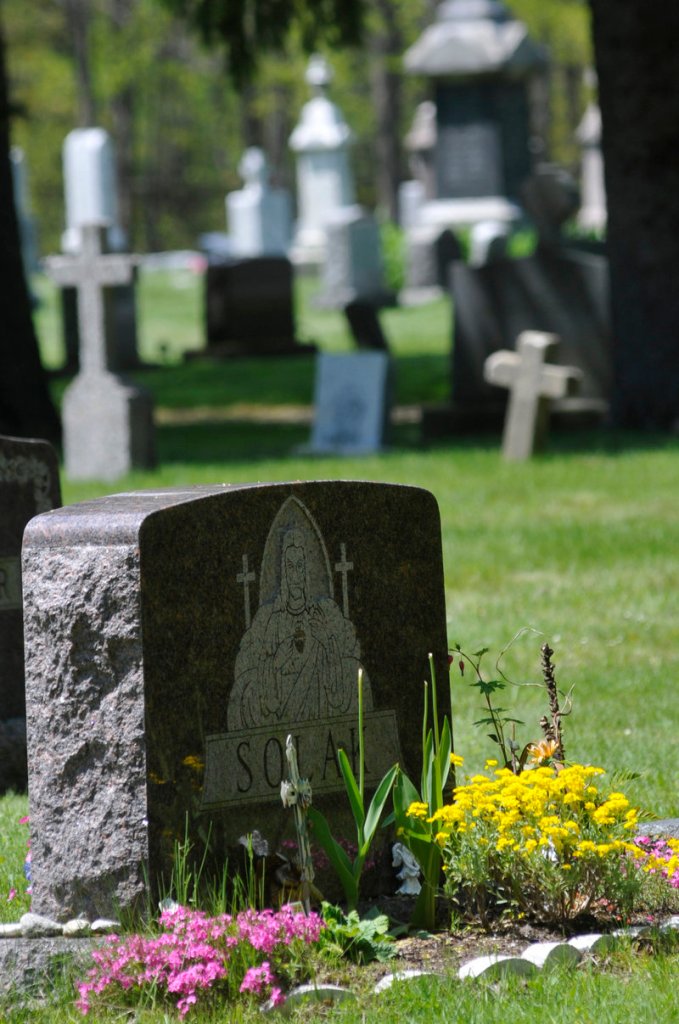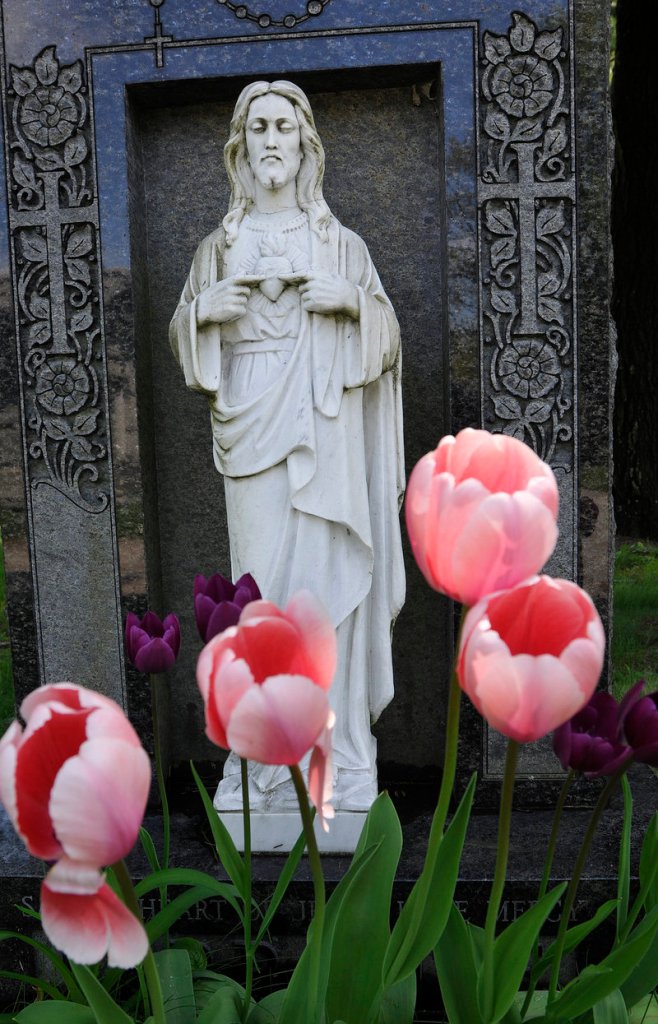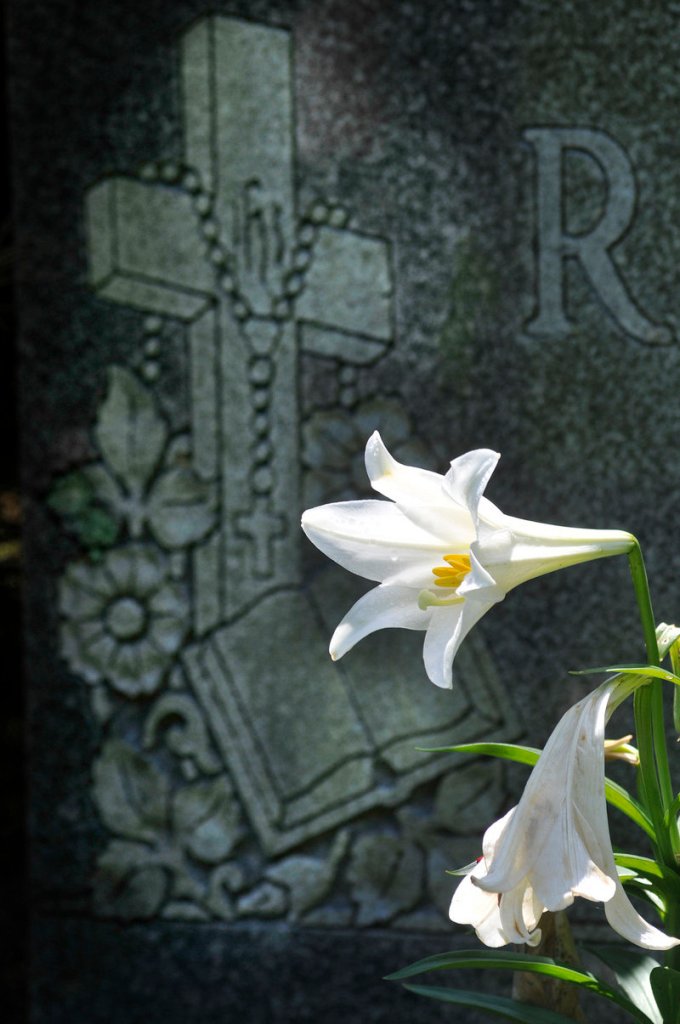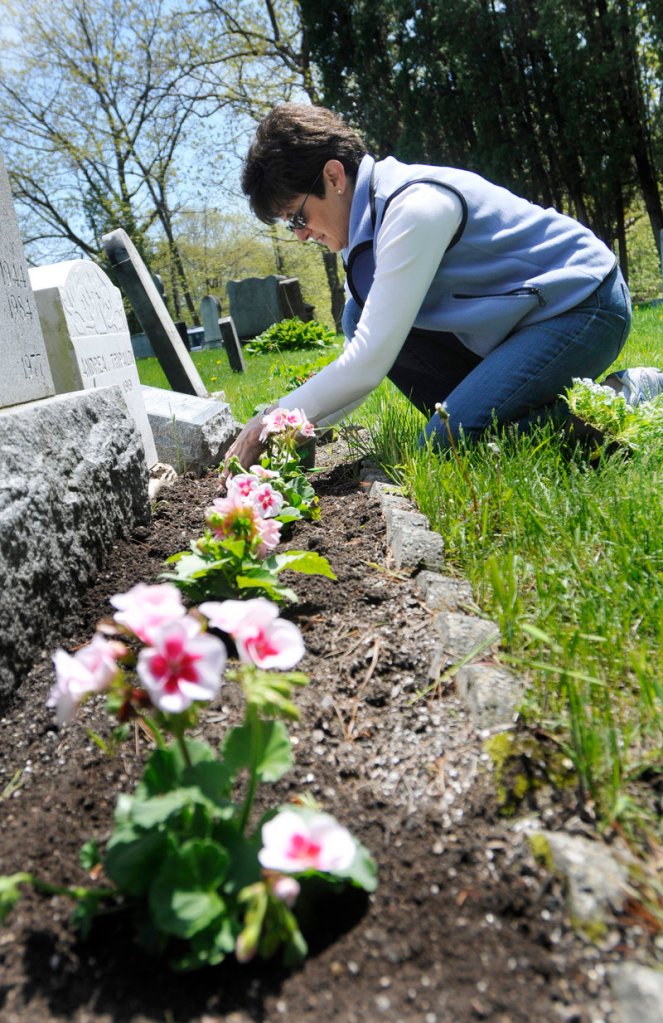This is the Super Bowl Sunday for cemeteries, says Joe Dumais, Portland’s Parks and Cemeteries director — the day when people put containers or flowers on gravestones of family members, or even put plants in the ground.
But you can’t put just anything at a grave site. Each cemetery has rules, and they vary from cemetery to cemetery.
“We have some pretty strict guidelines, and it is a constant battle to get people to adhere to them,” Dumais said. “A lot of it has to do with the look the trustees, owner or municipality is trying to maintain.”
Some cemeteries allow people to have permanent plantings at the grave sites, some don’t. Some allow plastic flowers, some don’t. Some don’t allow anything.
“The biggest driving component of why the rules exist,” Dumais said, “is that the life of the cemetery, no pun intended, has really changed over time. It used to be that people would buy a family plot and they would all come and have picnics on it, and they would spend time at the cemetery.
“The way it works now is that no one is staying in the same place anymore. Family plots are a rarity. It is all individual plots. A person is buried, and they plant something, and then the family moves, or they pass away or just don’t care. And no maintenance is done.”
If you are going to put something on a grave site, the first thing to remember is that grave sites are small. At Forest City Cemetery and Evergreen Cemetery, which Dumais oversees, they are 5.5 feet by 11 feet, so you don’t have much room.
And if your plant extends beyond those areas, you are trespassing.
The monument or gravestone is put at one end of that plot. In the Portland cemeteries — although Forest City is physically in South Portland — and Calvary Cemetery, a Catholic cemetery in South Portland, plants or planters are allowed only in front of the monuments.
The only shrubs allowed at the Portland cemeteries are dwarf Alberta spruce and dwarf arborvitae, and only in certain sections of the cemetery. And although those are considered dwarf plants, over time they can grow large enough to trespass on neighboring grave sites.
At Calvary Cemetery, no bushes are allowed except at large lots in the old part of the cemetery.
The other thing that people putting plants in the cemetery have to know is that there is no irrigation. Watering will depend on Mother Nature or the person who put the plants at the grave site. There are water spigots, so you don’t have to bring your own water.
Dumais said there are about 100,000 grave sites at the two cemeteries he oversees, and all the crew does is mow and trim the grass. They don’t have time to weed, water, prune or otherwise care for the plants.
A requirement at Calvary and the Portland cemeteries is that planters not be sharp or fragile, and be in good condition. They are going to be hit by lawn trimmers and could well be hit by mowers, so they have to stand up to the punishment.
Portland allows only one container of plants at each grave, except for the weeks after burial and one week before and one week after Memorial Day.
While most people will provide the flowers and plantings for their loved ones, the city places 1,200 geraniums and 100 flower arrangements on certain graves where people have set up funds to provide for that care in perpetuity.
Naturally, the days before Memorial Day get a little crazy with that work.
WHAT TO PLANT
Because the plants in a cemetery — whether put in the ground or in a container — are going to be tended rarely, it takes some tough plants to do the job.
Nalbert Tero, son of the owner at Springvale Nurseries in Springvale (he said he doesn’t have any other title), said one reason geraniums are so popular at cemeteries is that they are tough plants.
“They can get really dried out between waterings and still do pretty well,” Tero said.
Another drought-tolerant plant he likes is portulaca, which stays pretty close to the ground but looks good and is colorful. Bacopa is another drought-tolerant plant with white flowers and a trailing habitat.
Vinca will thrive well in cemetery conditions, and has some flowers even though it is often used as a ground cover. And dracena will put up with some pretty rough conditions.
Calibricoa, also called Million Bells and Superbells, looks good and lasts a lot longer than petunias. Salvias won’t do badly either, Tero said.
With cemetery planters especially, it makes sense to include water crystals in the planting mix. They come under a variety of brands, but they soak up water and release it over a long period of time. You also have to include a lot of organic materials in your soil.
ONE MORE PLANT SALE
A plant sale will be held 10 a.m. to 1 p.m. Monday at 114 Old Ocean House Road, Cape Elizabeth. Locally grown trees, shrubs and perennials from Old Ocean House Farms and from an extensive waterfront landscape in Scarborough will be available.
Sale proceeds will benefit the Arboretum at Fort Williams Park.
Tom Atwell can be contacted at 791-6362 or at
tatwell@pressherald.com
Send questions/comments to the editors.





